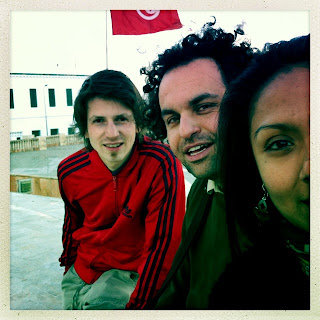International Festival of Contemporary art: Doris Salcedo interviewed by Carlos Basualdo
Faenza, Italy. 22 May 2010
Doris Salcedo described her personal view about the work of art in which the relationship between the artist and the work is of fundamental significance for contemporary art. In relation to her work Shibboleth (2007), the first project part of the Unilever Series created for the Tate Modern’s Turbine Hall, she let us know that this was a work that required two years for its conception and production. Doris Salcedo found it very important to start the project by visiting the space, being there in order to feel the space and discover, in her own words, “the contrast of what I am and the space”.

fare arte: Doris Salcedo - ph sara busato
She minds that an apparently empty space is charged of sense, the own history and, in consequence it is never ever empty. Her act is an act against the building. She tried to leave a scarf on it with a line, a sort of drawing that suggested borders, paths, divisions. The work is based on a real testimony but it is not about that. It is about of absence of memory, of vanishing. It is a personal commitment that she has with the victims of violence, with the people who experience the migration phenomenon. In a country like Colombia, seen as undefined and irrational, she tries to narrate the negative history by means of a negative space.
As curator, Carlos Basualdo cannot avoid to observe the reaction of the audience to her work and to know how it was perceived, but it seems to be not so relevant for the artist. By citing a poem of Celan, which tells about the act of putting a poem inside of a bottle and letting it go into the sea, Doris Salcedo explained that the work has it’s own life. Continuing with the comparison, she affirmed that if the message will be read or not, it is not the scope of the poet. And in this sense, the artist creates her work without thinking about how she would be looked at, conscious of all sorts of interpretation that her work could produce. “Bogota is a good place to hide” is her thought when she should reflect about the reactions of the public to her work.
For Carlos Basualdo, it was quite amazing how people followed the crack, going from one point to another and giving form to a sort of procession, what means for him to change the dynamics of space, going from an idea of space, so large and empty, to a sense of fullness.
Finally, Doris Salcedo talked about the central role of people’s attention into the work of art. People following, seeing and believing in what they see do need attention to closer imagine the work.
In this way, “any work of art needs attention, as a moment of communion, a silent moment”.
Written by Martha Jiménez Rosano for Cyou - International Festival of contemporary art, Faenza, Italy.
Doris Salcedo described her personal view about the work of art in which the relationship between the artist and the work is of fundamental significance for contemporary art. In relation to her work Shibboleth (2007), the first project part of the Unilever Series created for the Tate Modern’s Turbine Hall, she let us know that this was a work that required two years for its conception and production. Doris Salcedo found it very important to start the project by visiting the space, being there in order to feel the space and discover, in her own words, “the contrast of what I am and the space”.

fare arte: Doris Salcedo - ph sara busato
She minds that an apparently empty space is charged of sense, the own history and, in consequence it is never ever empty. Her act is an act against the building. She tried to leave a scarf on it with a line, a sort of drawing that suggested borders, paths, divisions. The work is based on a real testimony but it is not about that. It is about of absence of memory, of vanishing. It is a personal commitment that she has with the victims of violence, with the people who experience the migration phenomenon. In a country like Colombia, seen as undefined and irrational, she tries to narrate the negative history by means of a negative space.
As curator, Carlos Basualdo cannot avoid to observe the reaction of the audience to her work and to know how it was perceived, but it seems to be not so relevant for the artist. By citing a poem of Celan, which tells about the act of putting a poem inside of a bottle and letting it go into the sea, Doris Salcedo explained that the work has it’s own life. Continuing with the comparison, she affirmed that if the message will be read or not, it is not the scope of the poet. And in this sense, the artist creates her work without thinking about how she would be looked at, conscious of all sorts of interpretation that her work could produce. “Bogota is a good place to hide” is her thought when she should reflect about the reactions of the public to her work.
For Carlos Basualdo, it was quite amazing how people followed the crack, going from one point to another and giving form to a sort of procession, what means for him to change the dynamics of space, going from an idea of space, so large and empty, to a sense of fullness.
Finally, Doris Salcedo talked about the central role of people’s attention into the work of art. People following, seeing and believing in what they see do need attention to closer imagine the work.
In this way, “any work of art needs attention, as a moment of communion, a silent moment”.
Written by Martha Jiménez Rosano for Cyou - International Festival of contemporary art, Faenza, Italy.


Comments